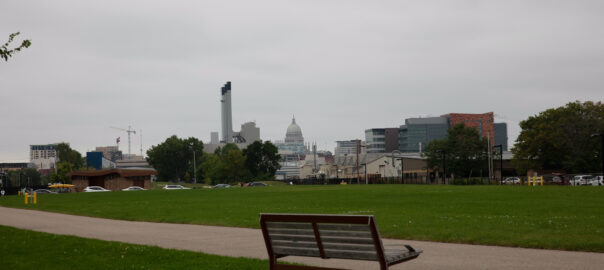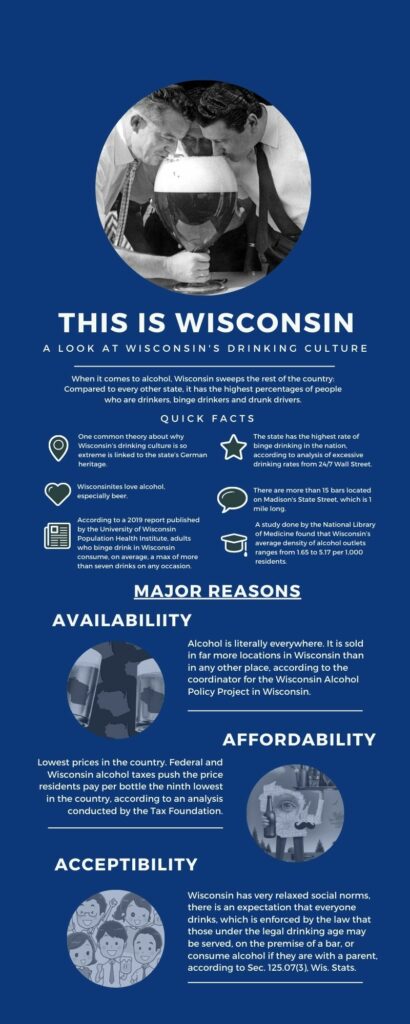Wisconsin is considered one of the worst states for racial disparity and diversity

Photo by Caroline Crowley.
By Gretchen Blohm
When it comes to disparities between Black, Indigenous, and people of color (BIPOC) and white communities, Wisconsin is considered one of the worst states in the country for racial disparities and racial inequality, according to the Center on Wisconsin Strategy (COWS).
COWS is based at the University of Wisconsin – Madison, promoting “high road” solutions to social problems. In 2019, COWS published a series, Race in the Heartland – Wisconsin’s Extreme Racial Disparities. The report is an update of COWS’ series on the disparities between white and Black Wisconsinites and a joint project of the Iowa Policy Project, Policy Matters Ohio, and the Economic Policy Institute.
“Wisconsin regularly ranks among the worst in the nation on all kinds of indicators,” said the Associate Director of COWS, Laura Dresser, in an interview with Wisconsin Public Radio.
COWS’ report highlights how the disparities between BIPOC and white residents of Wisconsin span poverty, unemployment, educational attainment, and incarceration.
In terms of economic disparities between BIPOC and white communities, one of the starkest indicators of inequality is in Wisconsin’s workforce, both employed and unemployed. Many BIPOC employees continue to feel cast aside and unheard in Wisconsin, specifically, Madison.
According to the Census Bureau, 86% of Wisconsin’s population is white and 6.6% is Black, with only about 0.3% of the Black population holding management positions.
Community Development Specialist for the City of Madison and member of Madison’s Multicultural Affairs Committee, Nancy Saiz is a Latin American female who has lived in Wisconsin for over 30 years but sees the effects of Wisconsin’s racial disparities and lack of diversity every day.
“When I started as an employee for the city there was a lot of unawareness. The City of Madison was predominantly white, but there was a group of African Americans that were hired at the same time as me. It was the first time I saw how we were put aside and questioned,” Saiz said. “I had a master’s degree in social work and experience in the community, and it was really weird because without even talking to me and seeing the skills I was bringing in, I was just cast aside.”
“The way we weren’t heard, the way we weren’t being seen when we first started. It was hard to start those conversations in the City of Madison.” Saiz said.
Saiz said that feeling safe or feeling heard at your job continues to be some of the things people of color have issues with within the workforce.
There are noticeable diversity and disparity issues within the workforce, but unemployment is another disparity issue. According to COWS’ data from 2015, white workers made up less than 4 percent of the state’s unemployed population.
“When you hear talk of how low unemployment rates are, and they are generally around 4 percent or just below, that’s true of the overall population,” Dresser said. “But the Black unemployment rate is nearly three times higher.”
Just as work environments and unemployment show racial disparity and inequality issues, the state is also hurting in terms of income inequality.
COWS’ report looked at the median household income statewide and found that white households’ median income is more than $58,000 annually. For BIPOC households, the median household income was $29,000, at the time of COWS’ report.
For members of the Black community, this income inequality can impact all aspects of life. Dresser said that this is especially true for families.
“I think most folks who are living close to, or below, $29,000 know the kind of stress and problems that lower incomes, if you have kids, can lead to,” she said.
Saiz said that when she first started working in social work, she noticed that marginalized people of color could not get access to healthcare. She also mentioned that dental care, homelessness, and healthcare were all issues in Madison back then, and are still issues now.
COWS’ Race in the Heartland shows that racial disparity is evident in any life stage. The report shows statistics from birth through school and into the labor market, voting booth, and criminal justice system. According to Race in the Heartland, child poverty in the Black community is higher compared to the white community.
Some Black students at the University of Wisconsin – Madison feel that the school needs more diversification and that because of the low number of BIPOC students that attend the school, they more often than not, feel out of place.
“I know that the University is working towards diversifying and recruiting people of all backgrounds,” said Tynan Drayton, who is a Black male, and currently a senior at the University of Wisconsin. “I created my own community of color and did what I could to create that essence of diversity, although I never felt like that was enough.”
African American Studies professor Melanie Herzog is currently teaching a Black Arts movement class and has seen the issues around education and jobs regarding racial disparity firsthand.
“The city of Madison is more diverse than when I moved here, but at the same time there are still huge inequities here, and in those inequities, there are class and race issues,” Herzog said. “There’s a lot to be done, but I’m not going to bash Madison because it’s taken a long time to make the city this way, so it’s going to take a long time to fix it.”
She said that different spaces are more welcoming and less welcoming at the University. When teaching a class containing a critical mass of students of color, Herzog said that those students felt more comfortable and centered, and less like they were speaking on behalf of their entire race.
“Institutions carry baggage that predisposes them to behave in a way to reinforce the belief that people of color are not welcome,” Herzog said. “Which backsteps what people are trying to do to better the community. Because of this, it’s important to attend to the class disparities and people’s deceptions of that.”
The Race to Equity report came out in 2013 and highlighted the inequities and racial disparities in the City of Madison. It aimed to create public awareness of the racial disparities that differentiate the white and Black experience in Dane County, Wisconsin. The data revealed facts about the state of the local African American community in contrast to the county’s white majority.
“That’s when [the release of the report in 2013] I feel the city became a little more open to ‘we need to do something,’” Saiz said. “Because the report looked really bad. It highlighted those inequities that were happening. It was an eye opener for the school districts and for the government.”
Figures from COWS’ Race in the Heartland report and the Race to Equity report paint a bleak picture of the state of racial inequities, diversity, and equality between BIPOC and white communities in Wisconsin.
The City of Madison has employed committees, like the Multicultural Affairs Committee, to help recognize how people are being treated in Madison and develop a set of recommendations for how to improve. The MAC will be providing the City of Madison with recommendations on how to improve Madison’s workforce environment in January.
MAC is working on recognizing how people are treated and working to change that. They’re working to integrate all intersections – disability, gender, and sexuality. The conversations are happening, and awareness is increasing.
“They are working really hard at making space and recognizing,” Saiz said.
Sources
http://racetoequity.net/baseline-report-state-racial-disparities-dane-county/


